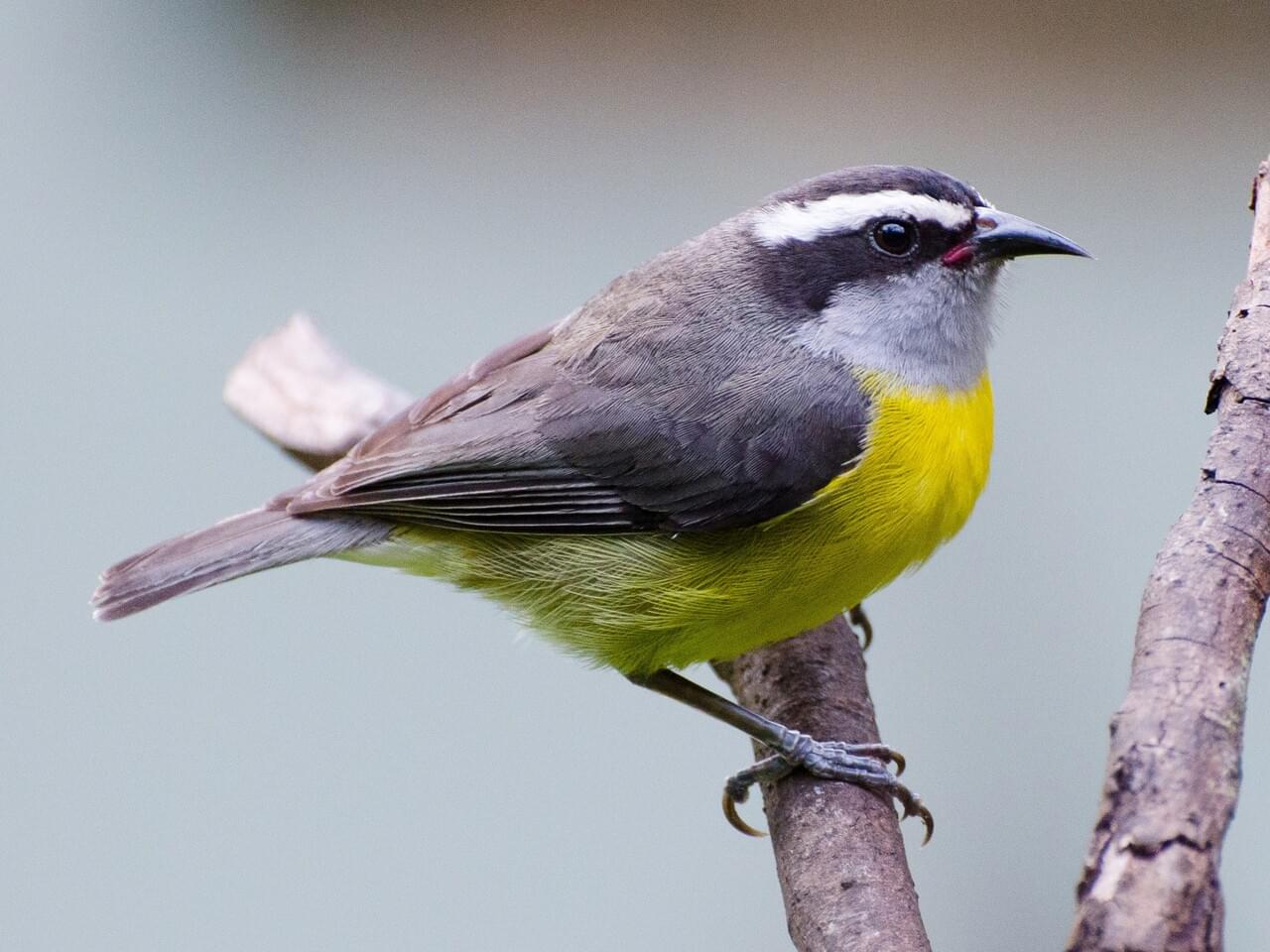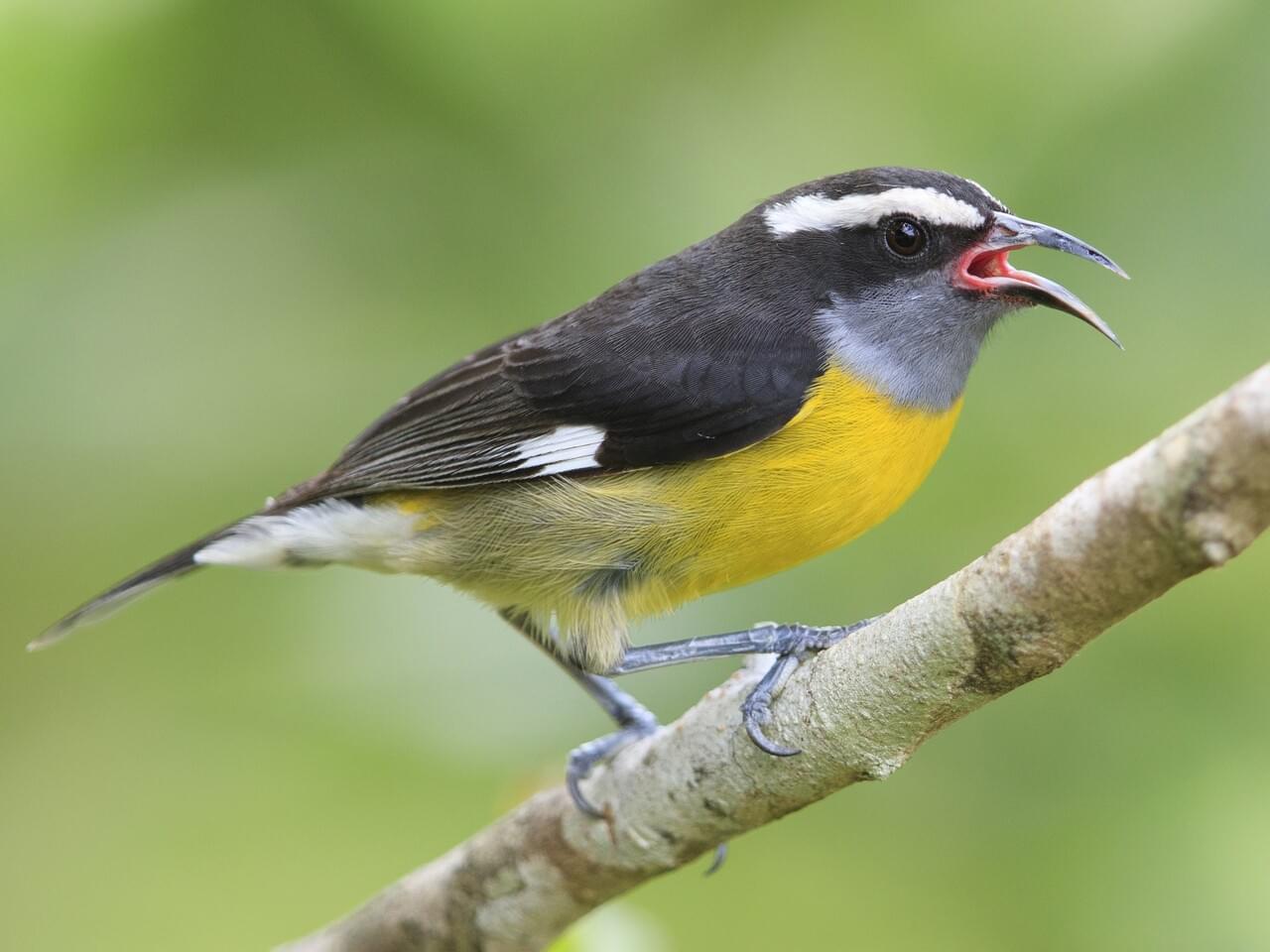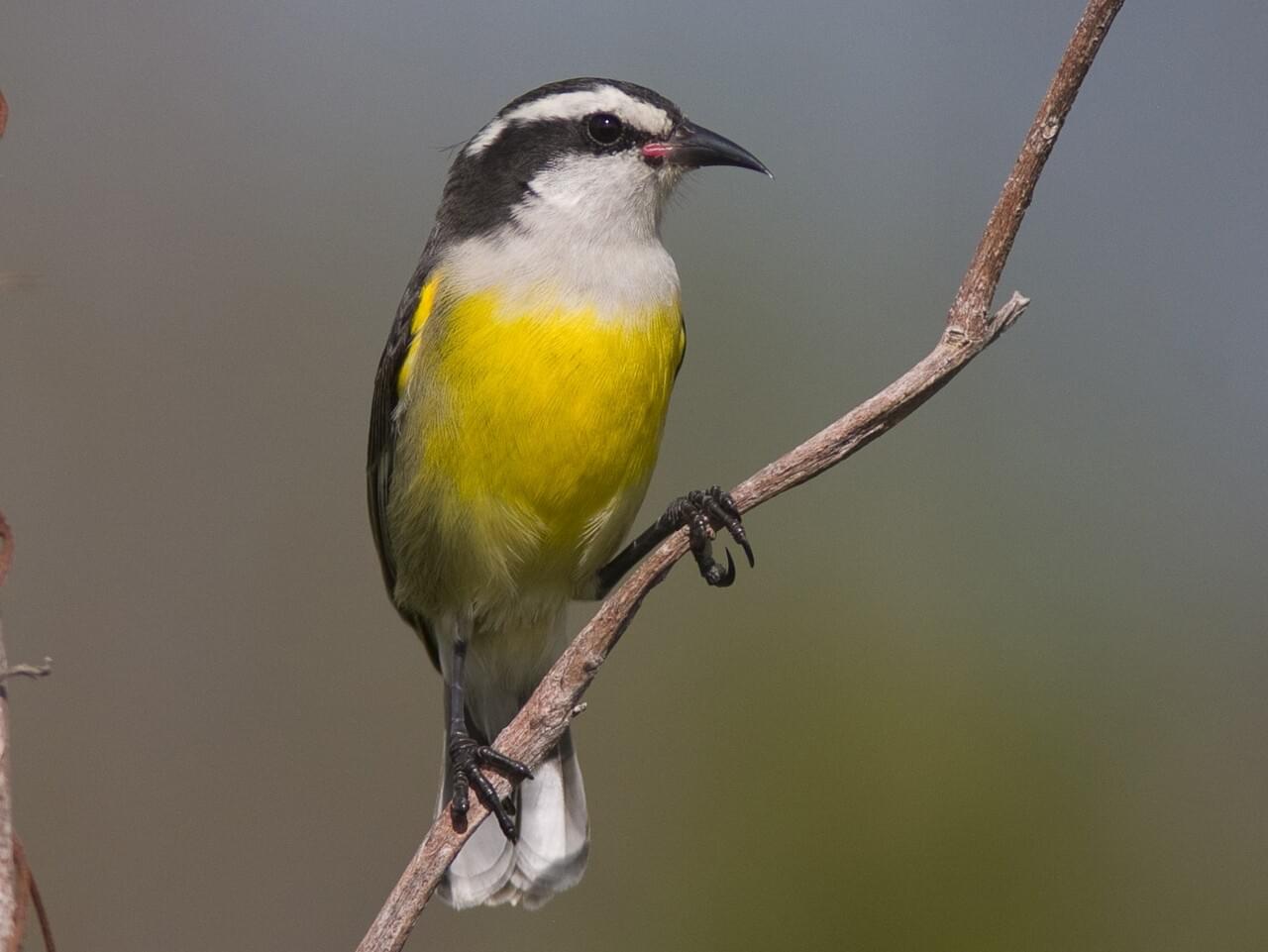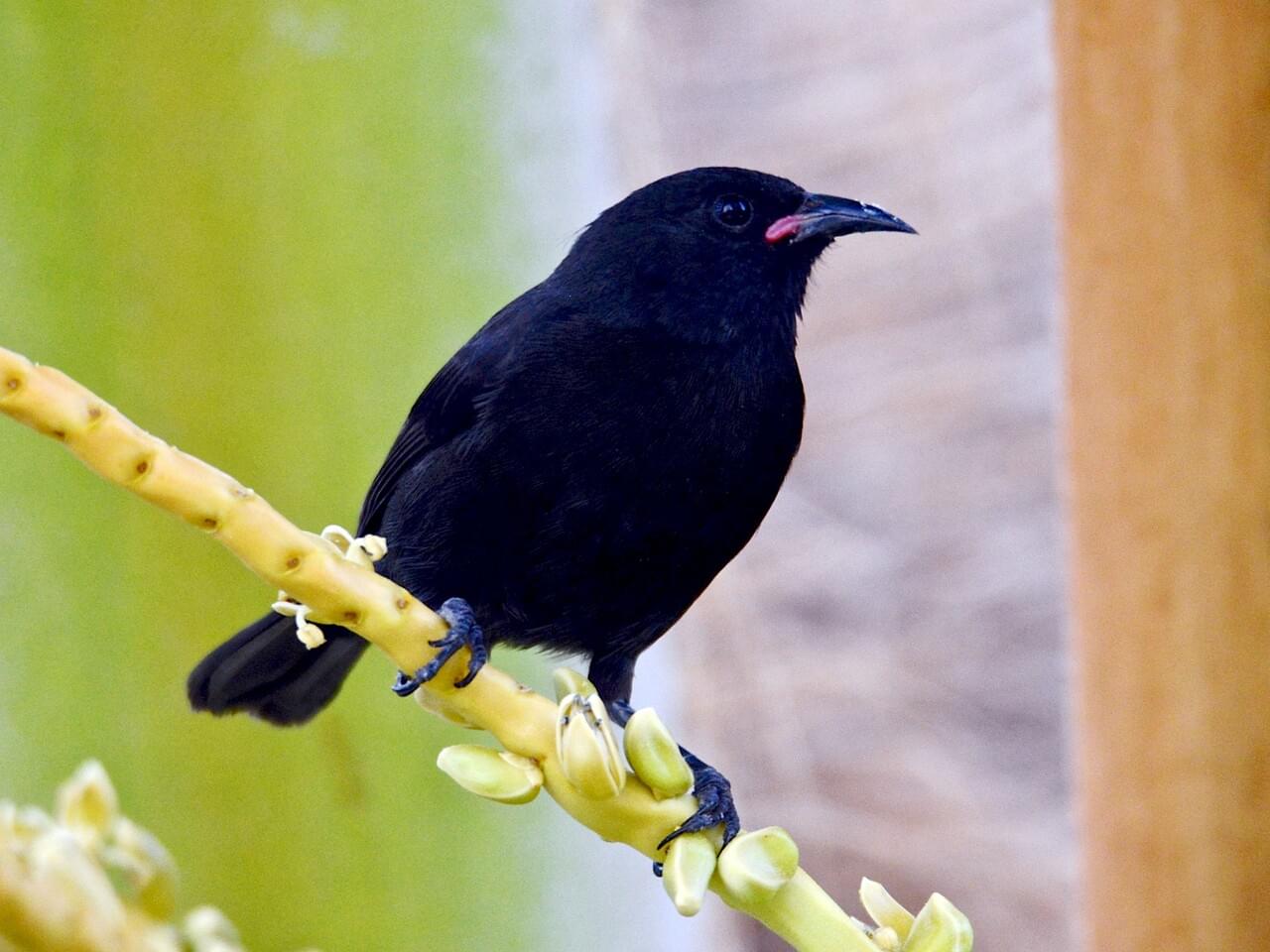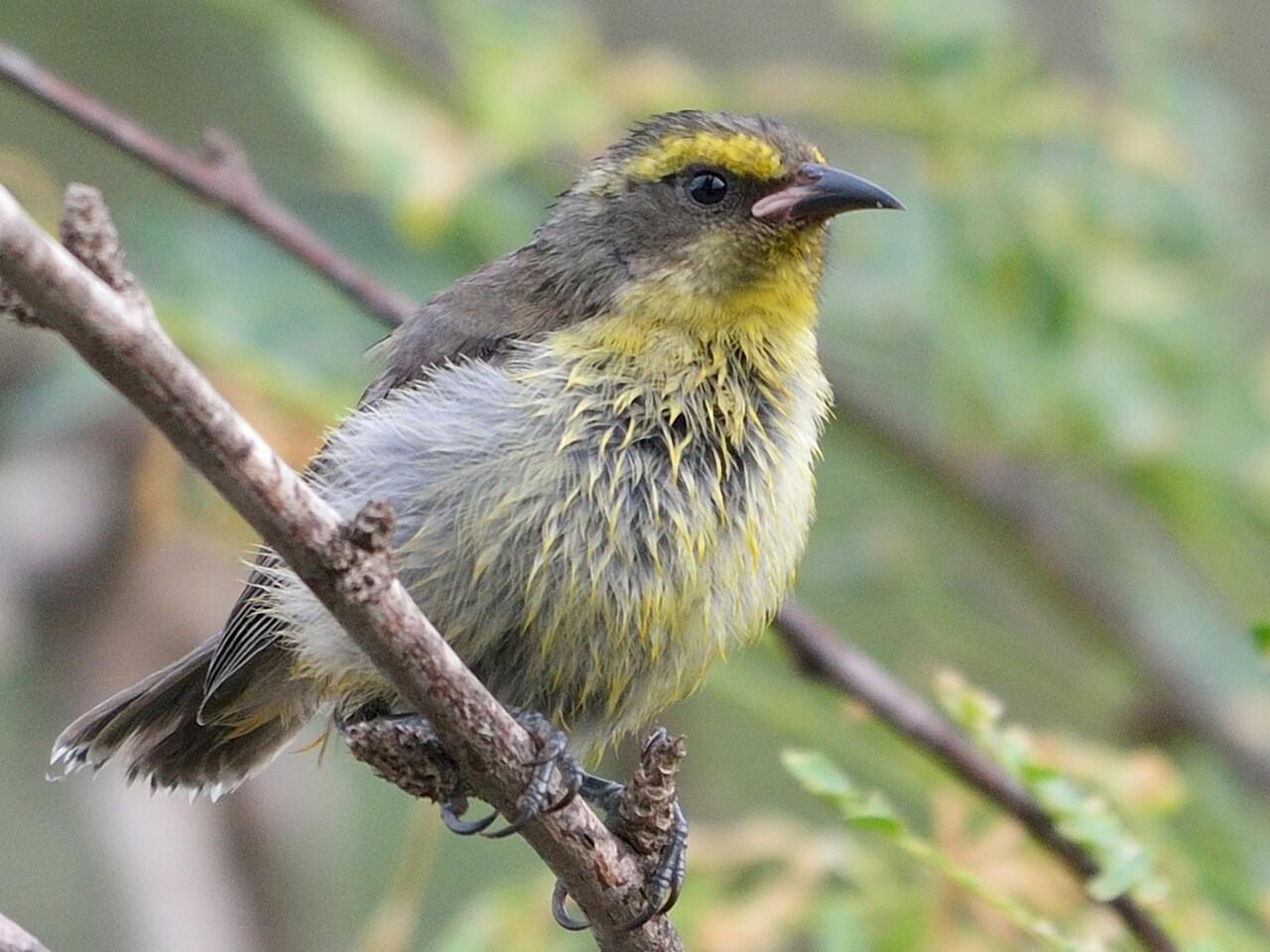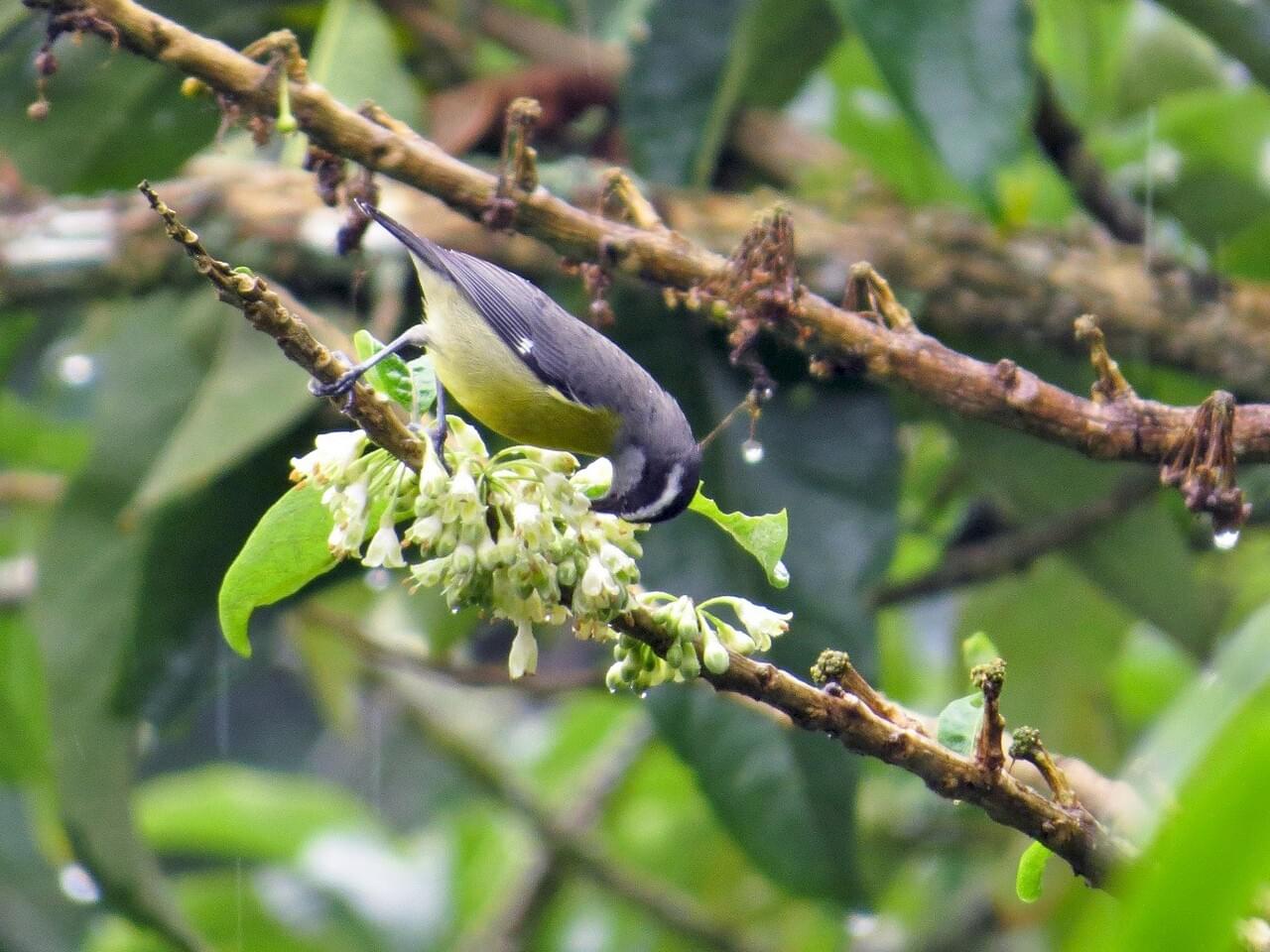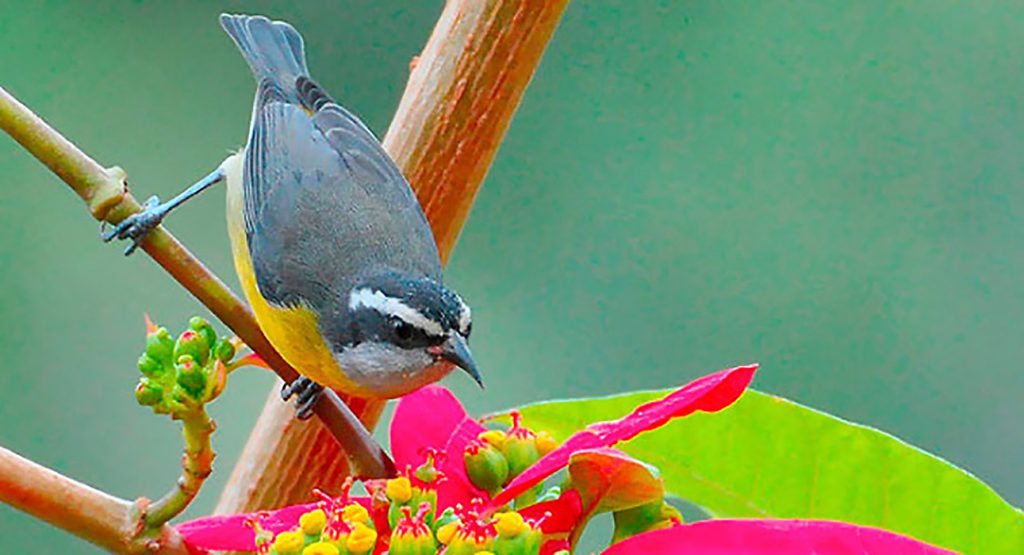 Photo ©
Cláudio Dias Timm
Photo ©
Cláudio Dias Timm
Bananaquit
Regional Species
The Bananaquit inhabits a variety of habitats from scrubland to tropical lowland forest edge, from the Antilles and Mexico south to Paraguay and northern Argentina. Bananaquits are distinctive birds with down-curved bills, black upperparts, bright yellow underparts, and a conspicuous white eyebrow. Bananaquits are bold and active feeders, and most often are encountered in pairs or in small family groups. With a diet of nectar and fruit, Bananaquits frequent flowering trees and shrubs where they often cling to flowers.
Range
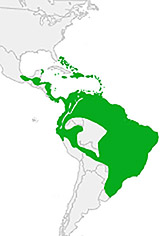
Habitat
Inhabits humid evergreen forest, humid woodland edges, acahual plantations, crops, second growth, cities and parks, gardens, orchards and hedges with abundant flowers, is found from sea level to 1000 m asl.
Food
They feed on small insects and spiders, also fruits and nectar. It has been reported as a nectar robber of flowers visited by Puerto Rican Emerald. It feeds on nectar from flowers as Erythrina leonatis.
Behavior
Often while clinging head downward; gleans small insects and spiders from foliage, or creeps over trunks and limbs searching for them; pierces berries to suck out juice; probes small flowers and pierces the base of long, tubular corollas for nectar. In some feeding areas, it is common to see competitive encounter between banaquits and other nectarivorous birds (like hummingbirds), and sometimes it is the dominant species.
Nesting
The nest is a compact globe with round doorway facing obliquely downward, of the most varied vegetable materials, often with much green moss, softly lined with seed down, fine fibers or feathers. Are persistent builders, at all seasons. The nest is placed at 1.5 a 3 m, rarely 15m up in shrubs, trees or vine tangles. The clutch size is 2 - 3 eggs, dull white, spotted with brown. Incubation lasts 12 to 14 days, and chicks leave the nest after 2 to 3 weeks.
Appearance
Typical Sound

© Peter Paul Kellogg / Macaulay Library
Size and Shape
9.5 - 10.5 cm. Black bill, pointed and curved downward.
Color Pattern
Crown and sides of head black. White eyebrow. Pale gray to white on throat. Dark gray on back. Wings dark gray with a white spot on base of the flight feathers. Yellow chest; yellowish on belly and rump. Black tail, white on base of the outer feathers. Slate-gray legs. Juveniles are duller, have yellowish eyebrow, head and back olive grayish.
Plumage Photos
Similar Species
The color pattern of plumage, bill shape and distribution in Mexico, make this an unmistakable species.
Did you know?!
- Across its broad distribution, Bananaquits exhibit considerable geographic variation, with no fewer than 41 recognized subspecies; these differ in features such as the color of the throat (white, gray or black), the presence or absence of a white spot on the wing, the length of the bill, and the extent of yellow on the underparts. In addition, on some islands in the West Indies an entirely sooty color morph is frequent.
